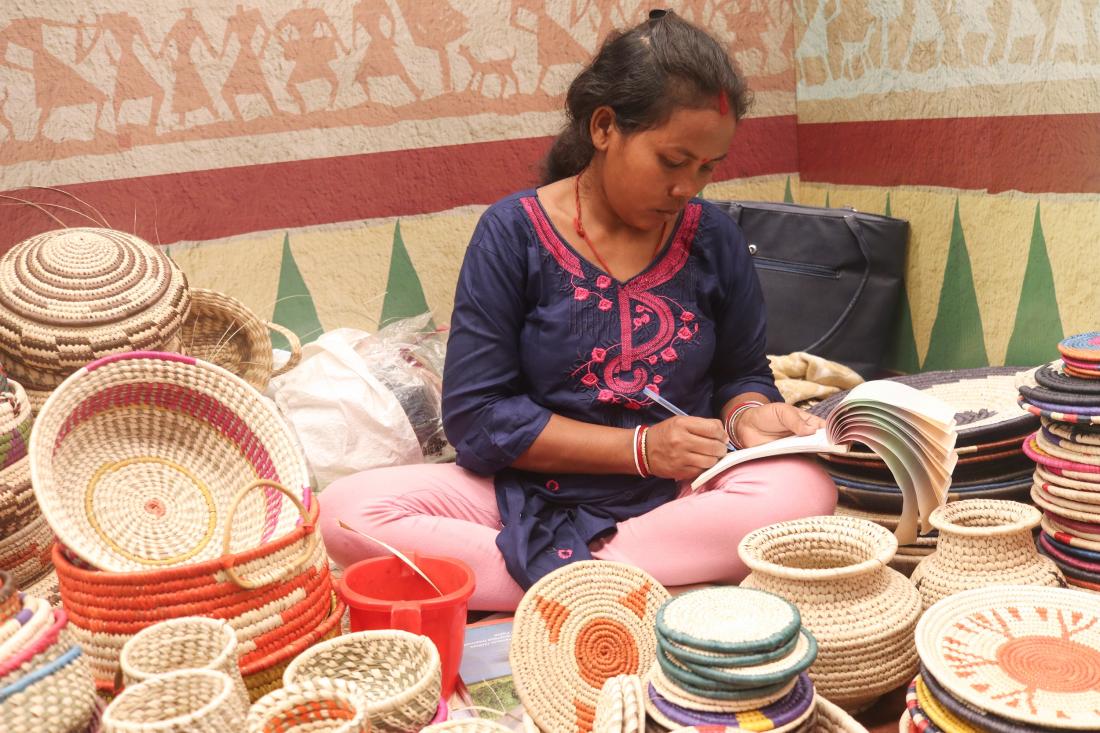Microfinance to Increase Social Capital and Female Empowerment in India
- Urban population
- Women and girls
- Empowerment
- Women’s/girls’ decision-making
- Gender attitudes and norms
- Credit
- Social networks
- Community-driven development
Social capital facilitates coordination and cooperation, leading to economic growth, but little is known about how to generate social capital. In India, researchers randomly assigned microfinance clients to monthly or weekly meeting schedules to test whether more frequent meetings could build social capital. They found that weekly meetings lead to higher levels of social interaction that continued beyond the initial loan cycle, which reduced default on subsequent loans but did not lead to measurable gains in female empowerment.
Policy issue
Social capital, or the relationships, institutions, and norms that shape social interaction, can facilitate coordination and cooperation, which may reduce the costs of doing business and ultimately contribute to economic growth. Yet, little is understood about how social capital is generated in poor communities and whether it can empower women.
Microfinance institutions (MFIs) typically require clients to meet in groups on a weekly basis to make loan repayments. These group meetings are thought to generate greater social capital through repeated social interaction. Furthermore, while naturally forming groups tend to be disproportionately composed of individuals with preexisting social ties or more social personalities, many MFIs assign clients to groups. As a result, these groups allow researchers to address a question that has not yet been rigorously investigated: can inducing individuals to interact with one another during repayment meetings generate social capital and facilitate economic cooperation?
Context of the evaluation
Village Financial Services (VFS) is an MFI operating in the peri-urban slums of Kolkata, India, whose clients are largely comparable to those of other MFIs operating in Indian cities. VFS works exclusively with women between the ages of 18 and 55 who have some income-generating activity in the form of a business, and own the home they live in. Despite these requirements, most borrowers are very poor, with an average per capita household income of less than two dollars per day. At the time of the two studies discussed in this summary, VFS offered loans varying in size from Rs. 4,000 to Rs. 15,000 (US$66-246) to over 160,000 women.

Details of the intervention
Researchers partnered with VFS to carry out two interventions investigating how variation in the frequency of microfinance group meetings affected the generation of social capital, and whether this in turn affected economic outcomes and female empowerment. One intervention worked exclusively with first-time borrowers while the other included both first-time and repeat borrowers.
First-time borrowers only: 1,016 borrowers were randomly assigned to microfinance groups that either met weekly and repaid weekly (30 groups) or met monthly and repaid monthly (38 groups). Thirty-two additional groups were supposed to meet weekly and repay monthly, but they did not adhere to this schedule. All first-time VFS clients were offered loans of Rs. 4000 with an interest payment of Rs. 400. Those who repaid weekly paid in 44 installments of Rs. 100, and those who repaid monthly paid in 11 installments of Rs. 400. Researchers tracked clients over two and a half loan cycles (about 176 weeks), and almost all clients took out a second loan (all with biweekly repayments) within this time.
First-time and repeat borrowers: Researchers conducted a similar study with 706 clients in 148 groups. Twenty-nine percent of women were first-time borrowers, 28 percent were starting a second loan with VFS, and 43 percent were starting a third loan. When possible, loan officers kept groups from previous loan cycles intact, which meant that new groups were often composed entirely of first-time borrowers. The average new client had 2.4 group members who were also new clients, but the average return client had only 0.7 group members who were new. Half of the groups were randomly selected to repay on a weekly basis and the other half repaid on a monthly basis. The loans ranged in value from Rs.4,000-12,000, and researchers tracked clients for the course of the ten-month loan cycle.
Results and policy lessons
Researchers found that weekly microfinance group meetings generated higher levels of social interaction that endured after the loans were repaid. Members of weekly repayment groups had lower default rates on subsequent loans, but they did not exhibit higher levels of female empowerment.
First-time borrowers only: Clients assigned to weekly repayment groups had higher levels of social contact with their group members outside of meetings and sustained this contact in the long run. In the short run, the average member of a weekly repayment group had a social contact index score that was three standard deviations higher than the average member of a monthly repayment group. The long run social contact index score was 0.19 standard deviations higher for members of weekly repayment groups. They were also 5.2 percentage points less likely (from a baseline of 7.2 percent) to default in the second loan cycle.
First-time and repeat borrowers: Members of weekly repayment groups had higher levels of social interaction than those of monthly repayment groups. Their score on the social contact index was, on average, 0.59 standard deviations higher. Social capital gains for clients in groups consisting entirely of returning borrowers were similar to the gains for clients in groups consisting entirely of new borrowers, suggesting that promoting social interaction can be beneficial even for individuals who already know each other.
In earlier analyses of these interventions (Microfinance Repayment Schedules in West Bengal), researchers found that borrowers who repaid every month were no more likely to default or make late payments in the first loan cycle. Those findings suggested that MFIs could save on transaction costs by switching to monthly repayment schedules. Results from these two interventions, which look beyond a single loan cycle, provide evidence in support of maintaining traditional weekly repayment schedules to promote social capital formation. Researchers are continuing to follow the social and business outcomes of these women.

